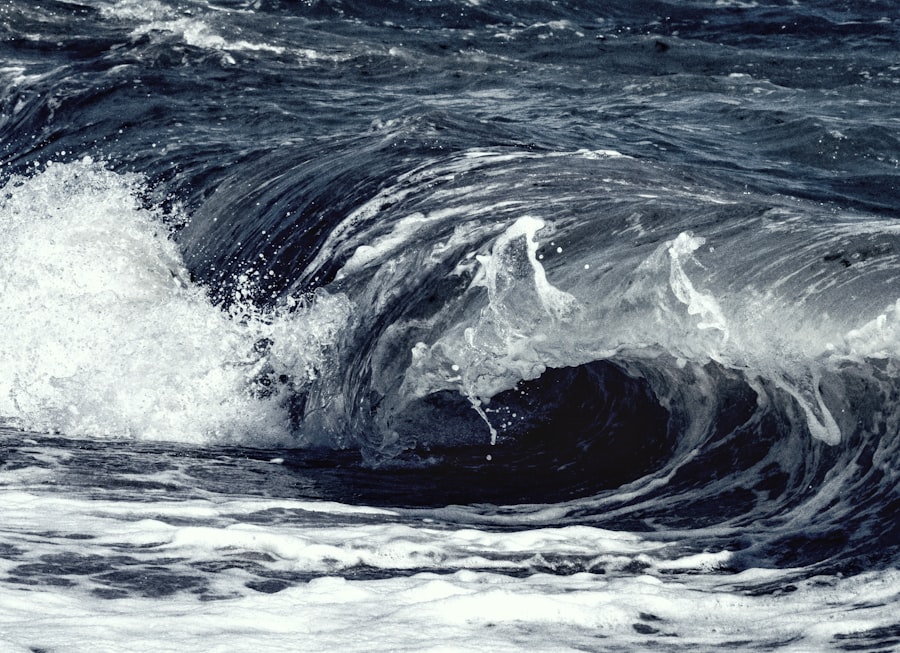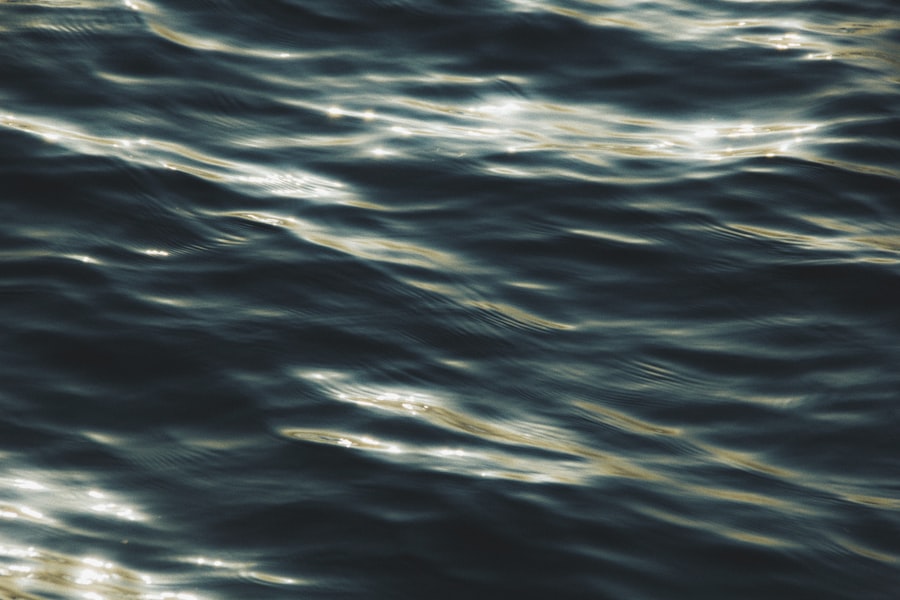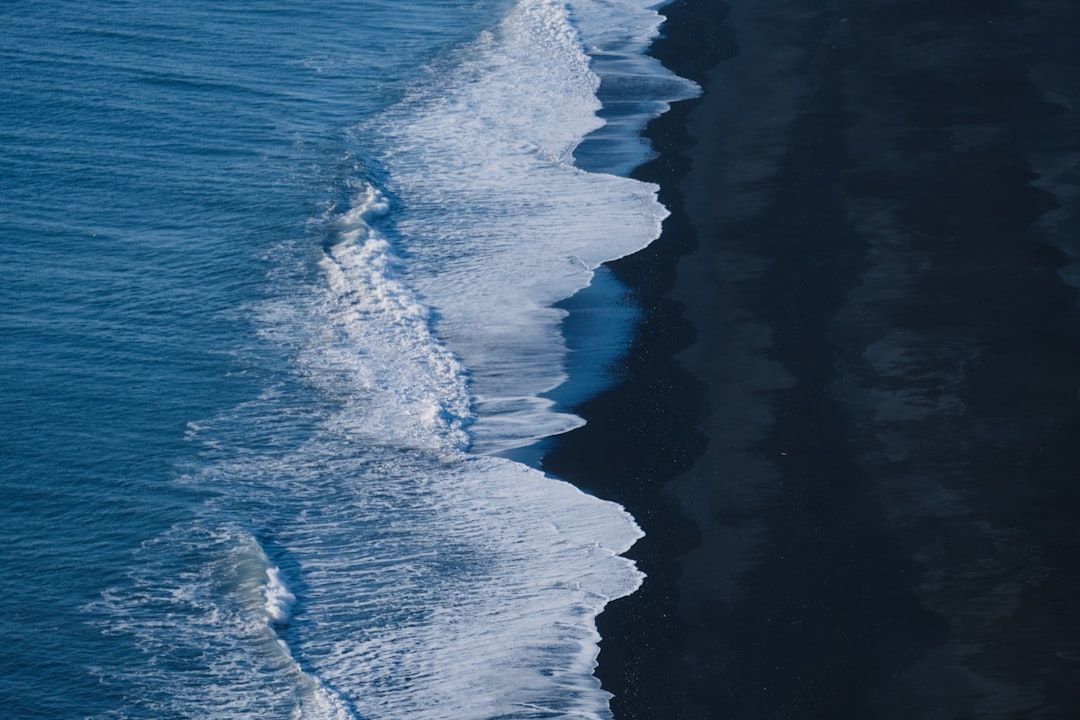The Drake Passage, a body of water situated between the southern tip of South America and Antarctica, is renowned for its tumultuous seas and unpredictable weather patterns. This narrow stretch of ocean, measuring approximately 800 kilometers (500 miles) wide, serves as a critical conduit for maritime traffic between the Atlantic and Pacific Oceans. Named after the English explorer Sir Francis Drake, who navigated these waters in the late 16th century, the passage has since become a focal point for researchers, adventurers, and commercial vessels alike.
Its unique geographical position not only makes it a vital route for shipping but also a challenging one, as it is often characterized by fierce winds and towering waves. The significance of the Drake Passage extends beyond mere navigation; it plays a crucial role in global oceanic currents and climate systems. The confluence of the Atlantic and Pacific Oceans creates a dynamic environment that influences marine biodiversity and weather patterns across the globe.
For sailors and navigators, understanding the intricacies of this passage is essential for safe passage. The Drake Passage is not just a geographical feature; it embodies the spirit of exploration and the challenges that come with traversing one of the most formidable maritime routes on Earth.
Key Takeaways
- The Drake Passage is a treacherous body of water located between the southern tip of South America and the northern tip of Antarctica.
- Current waves in the Drake Passage are some of the strongest in the world, with the potential to create extremely rough seas and challenging navigation conditions.
- Navigating the Drake Passage current waves requires careful planning and consideration of the impact of these waves on ship stability and safety.
- Strategies for navigating the Drake Passage current waves include choosing the right time of year, route planning, and utilizing modern technology for navigation and weather forecasting.
- Weather forecasting is crucial for safe navigation through the Drake Passage, as it allows ships to anticipate and prepare for changing conditions and potential hazards.
Understanding the Drake Passage Current Waves
The currents within the Drake Passage are a complex interplay of various oceanic forces, primarily driven by the Antarctic Circumpolar Current (ACC). This current flows from west to east around Antarctica, creating a powerful and relentless force that significantly impacts wave formation in the passage. The interaction between this current and the prevailing winds can lead to exceptionally high waves, often exceeding 10 meters (33 feet) during storms.
These waves are not only daunting but can also be unpredictable, making navigation through the passage a formidable challenge for even the most experienced mariners. In addition to the ACC, local wind patterns contribute to the unique wave dynamics of the Drake Passage. The region is notorious for its strong westerly winds, which can whip up waves in a matter of minutes.
These winds can create steep, short-period waves that are particularly hazardous for vessels attempting to navigate through the area. Understanding these wave patterns is crucial for sailors, as they must be prepared to adapt their strategies based on real-time conditions. The combination of powerful currents and unpredictable winds makes the Drake Passage one of the most challenging maritime environments in the world.
The Impact of Current Waves on Navigation

The impact of current waves on navigation in the Drake Passage cannot be overstated. For vessels traversing this treacherous stretch of water, the combination of high waves and strong currents can lead to dangerous situations. Ships may experience significant rolling and pitching, which can compromise stability and safety.
Navigators must be acutely aware of these conditions, as they can affect not only the vessel’s speed but also its course. A miscalculation in navigating these waves can result in delays or even catastrophic accidents.
In extreme conditions, visibility may be reduced due to spray and mist, making it difficult to maintain situational awareness. This can lead to increased stress levels among crew members and heighten the risk of accidents. Therefore, understanding how current waves interact with vessels is essential for ensuring safe navigation through the Drake Passage.
Mariners must be equipped with both knowledge and experience to effectively manage these challenges.
Strategies for Navigating the Drake Passage Current Waves
| Strategy | Effectiveness | Difficulty |
|---|---|---|
| Using a larger vessel | High | Medium |
| Timing the passage | High | Low |
| Following the current | Medium | High |
| Utilizing stabilizing technology | High | High |
Navigating the Drake Passage requires a combination of skill, experience, and strategic planning. One effective strategy is to monitor weather forecasts closely before embarking on a journey through the passage. By understanding upcoming weather patterns, navigators can choose optimal departure times that align with more favorable conditions.
Additionally, experienced sailors often recommend taking advantage of tidal currents when possible, as they can provide assistance in maintaining speed and stability. Another critical strategy involves adjusting course based on real-time observations of wave patterns. Skilled navigators will often alter their routes to avoid areas where waves are particularly steep or chaotic.
This may involve taking a more circuitous route but can ultimately lead to safer passage through the passage’s challenging waters. Furthermore, maintaining open lines of communication among crew members is vital; sharing observations about wave conditions can help everyone stay informed and prepared for sudden changes.
Importance of Weather Forecasting in Navigating the Drake Passage
Weather forecasting plays an indispensable role in navigating the Drake Passage effectively. Given its reputation for rapidly changing conditions, accurate weather predictions are essential for ensuring safe passage. Modern technology has significantly improved forecasting capabilities, allowing mariners to access real-time data on wind speeds, wave heights, and storm systems.
This information enables navigators to make informed decisions about when to set sail and how to adjust their routes during transit. In addition to traditional weather reports, many vessels now utilize advanced satellite technology to receive continuous updates on changing conditions. This real-time data allows crews to respond quickly to emerging weather patterns, enhancing their ability to navigate safely through turbulent waters.
By prioritizing weather forecasting as part of their navigation strategy, mariners can mitigate risks associated with sudden storms or adverse wave conditions in the Drake Passage.
Safety Precautions for Navigating the Drake Passage

Safety precautions are paramount when navigating the Drake Passage due to its notorious reputation for rough seas and unpredictable weather. One fundamental precaution is ensuring that all safety equipment is readily available and in good working order before departure. This includes life jackets, lifeboats, emergency flares, and communication devices.
Crew members should also undergo safety drills to familiarize themselves with emergency procedures in case of an incident. Another critical safety measure involves maintaining vigilant watchkeeping practices throughout the journey. Designating crew members to monitor conditions continuously ensures that any changes in weather or wave patterns are promptly communicated to all aboard.
Additionally, vessels should be equipped with reliable navigation systems that provide accurate positioning information, allowing crews to make informed decisions about course adjustments as needed. By prioritizing safety precautions, mariners can significantly reduce risks associated with navigating this challenging passage.
Tips for Dealing with Rough Seas in the Drake Passage
Dealing with rough seas in the Drake Passage requires both mental fortitude and practical strategies. One effective tip is to remain calm and composed during turbulent conditions; panic can exacerbate an already stressful situation. Crew members should be encouraged to communicate openly about their experiences and feelings during rough seas, fostering a supportive environment that helps everyone cope with challenges.
Practically speaking, securing all loose items on board is essential before encountering rough seas. This prevents potential hazards from becoming projectiles during turbulent conditions. Additionally, adjusting sail configurations or engine power can help stabilize the vessel and maintain control over its movements.
Crew members should also be trained in proper techniques for moving around the ship during rough seas to minimize the risk of injury.
The Role of Technology in Navigating the Drake Passage
Technology has revolutionized navigation in challenging environments like the Drake Passage. Advanced navigation systems equipped with GPS technology provide mariners with precise positioning information, allowing them to chart their courses more accurately than ever before. Additionally, radar systems enable crews to detect obstacles and other vessels even in low visibility conditions, enhancing safety during transit.
Moreover, weather forecasting technology has made significant strides in recent years. Satellite imagery and real-time data collection allow mariners to access up-to-date information about wave heights, wind speeds, and storm systems affecting their routes.
As technology continues to evolve, it will undoubtedly play an increasingly vital role in ensuring safe navigation through the challenging waters of the Drake Passage.
Environmental Considerations in Navigating the Drake Passage
Navigating the Drake Passage also necessitates careful consideration of environmental factors. The region is home to diverse marine ecosystems that are sensitive to human activity. As vessels traverse these waters, they must adhere to strict environmental regulations designed to protect marine life and habitats from pollution and disturbance.
This includes measures such as proper waste disposal practices and minimizing noise pollution that could disrupt wildlife. Additionally, mariners should be aware of their impact on local ecosystems when planning their routes through the passage. Avoiding sensitive areas during breeding seasons or migration periods can help mitigate potential harm to marine species.
By prioritizing environmental considerations in their navigation strategies, sailors can contribute to preserving the delicate balance of life within this unique maritime environment.
Historical Challenges and Successes in Navigating the Drake Passage
The history of navigating the Drake Passage is marked by both challenges and successes that reflect human resilience and ingenuity. Early explorers faced immense difficulties as they sought new trade routes and territories during an era when navigation relied heavily on rudimentary tools and knowledge of celestial bodies. Many ships were lost due to storms or navigational errors, highlighting the perilous nature of this maritime route.
However, over time, advancements in navigation technology have transformed how vessels traverse these waters. The introduction of steam-powered ships in the 19th century allowed for greater control over speed and direction, enabling mariners to navigate more effectively through rough seas. Today’s modern vessels are equipped with sophisticated technology that enhances safety and efficiency while traversing this historically challenging passage.
Conclusion and Final Thoughts on Navigating the Drake Passage Current Waves
Navigating the Drake Passage remains one of the most formidable challenges faced by mariners today. The combination of powerful currents, unpredictable waves, and rapidly changing weather conditions demands a high level of skill and preparation from those who dare to traverse its waters. However, with advancements in technology and a deeper understanding of environmental factors at play, sailors are better equipped than ever before to navigate this treacherous passage safely.
Ultimately, successful navigation through the Drake Passage hinges on a combination of experience, strategic planning, and respect for nature’s forces. By prioritizing safety precautions, utilizing modern technology for weather forecasting, and remaining vigilant during transit, mariners can enhance their chances of successfully navigating this iconic stretch of ocean while contributing to its preservation for future generations. The Drake Passage stands as a testament to human exploration—a reminder that even amidst nature’s challenges lies an opportunity for discovery and adventure.
The Drake Passage is renowned for its powerful and unpredictable currents, which play a crucial role in global ocean circulation. These currents are influenced by a variety of factors, including wind patterns and the unique geography of the region. For those interested in exploring more about ocean currents and their impact on marine navigation, a related article can be found on MyGeoQuest. This resource provides valuable insights into the dynamics of ocean currents and their significance in the broader context of Earth’s climate system. To delve deeper into this topic, you can visit the article by clicking on this link.
WATCH NOW! Drake Passage: Earth’s Deadliest Waters Revealed
FAQs
What are Drake Passage current waves?
Drake Passage current waves are powerful ocean currents that flow through the narrow passage between South America’s Cape Horn and the South Shetland Islands of Antarctica.
How strong are Drake Passage current waves?
Drake Passage current waves are some of the strongest in the world, with speeds reaching up to 20 knots (23 mph) at their peak.
What causes Drake Passage current waves?
The strong and consistent westerly winds in the Southern Ocean drive the formation of the Drake Passage current waves. These winds push the surface waters northward, creating a powerful current.
Why are Drake Passage current waves important?
Drake Passage current waves play a crucial role in the global ocean circulation system, as they connect the Pacific, Atlantic, and Indian Oceans. They also influence the climate and marine ecosystems in the region.
Are Drake Passage current waves dangerous?
Drake Passage current waves can be dangerous for ships and other vessels due to their strength and unpredictability. The area is known for rough seas and challenging sailing conditions.
Can Drake Passage current waves be studied?
Yes, scientists and researchers study Drake Passage current waves to better understand their impact on ocean circulation, climate, and marine life. This research often involves the use of oceanographic instruments and research vessels.
